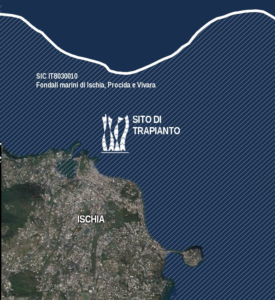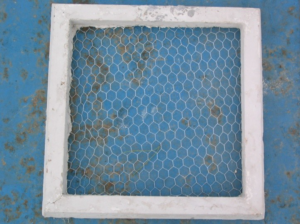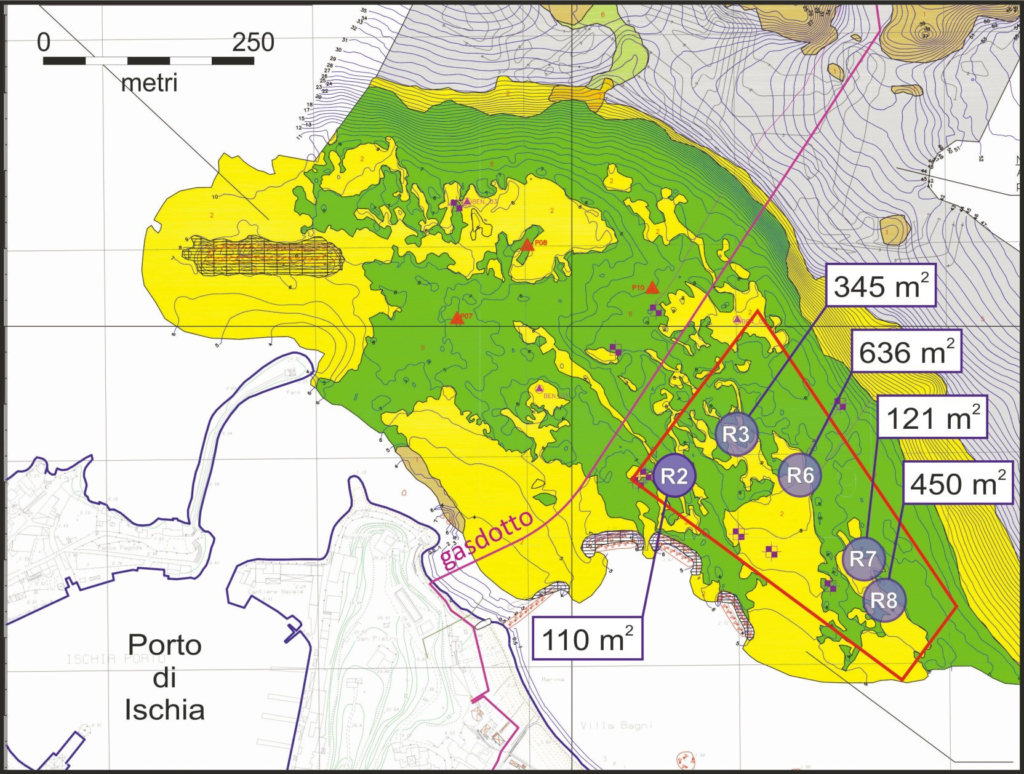Ischia
Context
In 2009 the gas pipeline was settled by CPL CONCORDIA Soc. Coop (part of the Ischiagas S.r.l. distribution network), as part of the methanization project of the island of Ischia (NA), which involved the construction of a gas pipeline that connected the mainland, or the coast of Fusaro Lake in the municipality of Bacoli (NA), to Punta San Pietro, in the municipality of Ischia (NA). The excavation of the trench for the laying of the pipeline was planned through the Posidonia oceanica prairie in front of the landing area. The transplant of P. oceanica was prescribed in the Environmental Impact Assessment decree (EIA 10/2008) by the Ministry of the Environment and the Protection of the Territory and the Sea (MATTM) to CPL CONCORDIA Soc. Coop, as a measure to compensate for the damage caused by the excavation of the trench for the pipeline. The section affected by the pipeline excavation corridor, which falls within the prairie included in the Site of Community Importance (SCI IT8030010) “Seabed of Ischia, Procida and Vivara”, had a length of about 400 m and a total area equal to that prescribed for transplantation, at a depth between 7 and 12 meters.
The transplant, of 1600 m2, was carried out before the excavation of the trench, between November 2008 and February 2009, in areas identified as suitable, in an area located immediately south-east of the pipeline route (Fig. 1). It is emphasized that within the same decree it was prescribed to cover the trench with the same excavated material, supplemented if necessary by coarse rock debris in order to favor the spontaneous colonization of the excavation route by the adjacent Posidonia prairie and monitor the evolution of potential recolonization for 10 years.
Transplant technique
To anchor the cuttings to the substrate, concrete frames of 50 × 50 cm were used (Figure 1), with an internal lumen 40 × 40, for a useful surface equal to 1600 cm2. The thickness of the frames is 6-8 cm. They are reinforced with galvanized iron mesh with polygonal mesh, with a light suitable for holding the cuttings (about 1.5-2 cm). The cuttings are planted by hand in underwater immersion (Fig. 2), simply by inserting the rhizomes into the meshes of the polygonal network, so that the rhizome itself or the roots are in contact with the sediment. The meshes of the metal mesh used are sufficiently ductile to be crushed and firmly secure the cutting to the anchoring module. The technique was used on a sandy bottom.
Previous monitoring of the transplant in 2008-2009
Three months after the end of the cuttings transplant operations, the monitoring activities began, which lasted five years. The activities carried out during the monitoring phase were of a destructive and non-destructive type. For the purposes of non-destructive monitoring, only in situ measurements were carried out, both for the transplantation areas and for the surrounding prairie. Four times a year, for five years, the following diving measurements were carried out:
- count of residual cuttings and / or number of bundles per module
- determination of leaf growth through the method of Zieman (1974) as predicted by Ott (1980), with the exclusion of time 0, at which only the punching of the leaves is performed
- determination of the rank and length / width of the longest leaf
- determination of the state of the apexes and estimation of brown tissue
- qualitative evaluation of the epiphytic community of leaves
After a 5-year monitoring (May 2009 – March 2014) on a quarterly basis, as required by the Environmental Impact Assessment Decree (VIA 10/2008), the monitoring was repeated on a voluntary basis in September 2015 and October 2017 performing only the counts of the residual cuttings in continuity with the monitoring protocol described in Fig. 3.

Figure 3 – Timeline of the monitoring campaigns carried out on the Ischia site from the time of transplantation
Monitoring activities in the context of LIFE SEPOSSO
Between 17 and 20 September 2018 the SEPOSSO Partnership participated in the field activities on the Ischia transplant site. A total of 8 scuba divers from the University of Rome “Tor Vergata”, ISPRA, ARPAT, AdSPMTS and the University of Palermo participated in the activities. As part of these activities, a pre-dive briefing was carried out, where the University of Rome “Tor Vergata”, based on the experience gained in the previous phases of transplantation and site monitoring, coordinated the activities. The following activities were performed:
activities 2018:
- count of number of bundles per module (in transplant stations)
- leaf density estimate (in control stations)
- determination of the rank and length / width of the longest leaf
- determination of the state of the apexes and estimation of brown tissue
- qualitative evaluation of the epiphytic community of leaves
- collection of bundles for lepidochronology on the transplant station and on natural grassland (on some selected stations)
- sampling of associated fauna by means of sorbonne on the transplant station and on natural grassland (on some selected stations)
- studies on the microdistribution of the beams on the transplant station and on natural grassland (on some selected stations)
activities 2019:
- estimate of leaf density in the patches present on transplanted bundles
- P. oceanica coverage estimates in transplant areas
- video-photographic investigations in the transplant areas aimed at creating photo-mosaics
- count the number of patches in the transplant areas and measure of the most representative patches
- count the number and measure of the length of the plagiotropic bundles at the edges of the transplant frame
collection of bundles for lepidochronology on the transplant station and on natural grassland (on some selected stations) - sampling of associated fauna by means of sorbonne on the transplant station and on natural grassland (on some selected stations)
- studies on the microdistribution of the beams on the transplant station and on natural grassland (on some selected stations)
Footage acquired on clearings R3 and R6 in 2018



